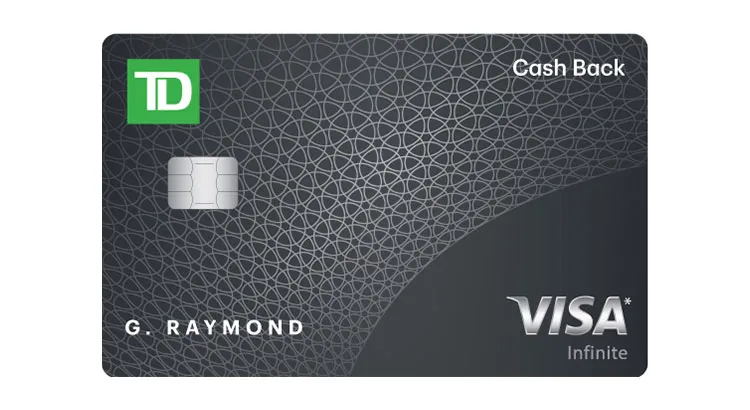How to choose the best cashback credit card for your monthly purchases

Choosing the Right Cashback Credit Card
When it comes to managing your finances, a cashback credit card can be a valuable tool. They allow you to earn money back on your everyday purchases, making them a smart choice for savvy shoppers. However, with a myriad of options available in the Canadian market, selecting the best one for your needs can be a bit daunting.
To help simplify the decision-making process, consider these key factors:
- Cashback Rates: Look for cards that offer competitive rates on categories you frequently spend in, such as groceries, gas, or dining out. For example, some cards may offer 5% cashback on your grocery bills while providing 1% on all other purchases. If you spend a significant amount on groceries each month, a card with elevated cashback in that category could lead to substantial savings over time.
- Annual Fees: It’s crucial to consider that some cashback cards come with annual fees, which can offset your cashback earnings. Determine if the rewards justify the cost. For instance, a card that offers 2% cashback on all purchases but charges a $120 annual fee may only be worth it if you expect to earn more than that in rewards throughout the year. Always calculate your potential earnings against the fees to make an informed decision.
- Bonus Offers: Many cards provide sign-up bonuses, sometimes offering up to $300 after you spend a certain amount within the first few months. This can significantly enhance your cashback returns. For example, if you can spend $1,000 within the initial three months on everyday expenses, weighing this bonus against your typical spending might reveal that certain cards offer lucrative perks on top of standard cashback rates.
- Redemption Options: Investigate how easy it is to redeem your cashback. Options may include statement credits, gift cards, or direct deposits to your bank account. Some cards might offer better value if you redeem for specific rewards, while others provide straightforward cash back into your account. If you prefer simplicity, a card that allows you to redeem your cashback directly as a statement credit may be particularly appealing.
By focusing on these essential features, you can start narrowing down your options. Additionally, reviewing your typical monthly spending habits will guide you toward a card that maximizes your rewards. For instance, if you frequently travel, a card that offers elevated cashback on travel-related expenses could greatly benefit you.
With a little research and careful consideration, you can find a cashback credit card that truly enhances your financial toolkit. Taking the time to understand how these cards work and what they can offer will ultimately help you make an informed choice that aligns well with your lifestyle and financial goals.
Understanding Your Spending Patterns
Before you dive into selecting a cashback credit card, it’s essential to have a clear picture of your spending habits. Understanding where and how much you spend each month will significantly influence which card will benefit you the most. To make this assessment, consider tracking your expenses for a month or two, categorizing them based on common spending areas. This will help you identify which categories you spend the most on, such as:
- Groceries: If you find that groceries make up a significant portion of your monthly budget, look for cards that provide enhanced cashback rates in this category.
- Gas: Frequent drivers can benefit from cards that offer higher cashback rates on fuel purchases, allowing some savings at the pump.
- E-commerce: With the rise of online shopping, if your spending leans toward e-commerce, selecting a card that rewards online purchases can maximize your benefits.
- Dining Out: For those who enjoy dining at restaurants, certain cards provide higher cashback rewards for eating out, thus making meals out more rewarding.
By categorizing your expenses, you will have a clearer understanding of which cashback card aligns with your spending style. For instance, if groceries and gas are your top two spending categories, a card that offers 4% cashback on groceries and 3% on gas would likely yield greater rewards than a card with lower percentages across all categories.
Furthermore, consider whether your spending tends to fluctuate month over month. If you often make larger purchases during certain seasons, like back-to-school shopping or holiday gifts, selecting a card that provides bonus cashback during those times can also help maximize savings.
Evaluating Reward Structures
Once you have a handle on your spending, the next step is evaluating the reward structures of different cashback cards. Cashback programs may vary considerably in how they calculate rewards, and understanding these structures can help you make an informed decision. Here are a few common types of cashback structures to consider:
- Flat Rate Cashback: Some cards offer a standard percentage cashback on every purchase. For example, a card might provide 1.5% cashback on all spending. This could be advantageous if you prefer simplicity and want to earn consistent rewards without having to track specific categories.
- Tiered Cashback: Other cards provide different cashback rates for different categories. While these can be beneficial for maximizing rewards based on your spending habits, ensure that you are aware of which categories offer higher percentages and how often your spending aligns with them.
- Rotating Categories: Certain cards energize their offerings by changing bonus categories every quarter, such as offering increased cashback for gas purchases in one quarter and grocery purchases the next. This type of card requires you to keep track of the rotating categories, and it may not be suitable for everyone.
Ultimately, remembering that your personal spending habits and preferences will serve as guiding factors will help you choose the right credit card that fits seamlessly into your lifestyle. By aligning your spending patterns with the appropriate types of cashback structures available, you can start harnessing the full potential of rewards on the purchases you make every day.
Considering Fees and Benefits
As you continue your quest for the perfect cashback credit card, it is vital to take into account any associated fees and additional benefits that each card offers. While the appeal of cashback rewards is undeniable, understanding the overall cost of maintaining the credit card is essential to ensure it remains a valuable asset. Here are some key points to consider:
- Annual Fees: Some cashback cards come with an annual fee, which can range from nominal to significant amounts. Make sure you calculate whether the cashback rewards you earn will outweigh this cost. For example, if you opt for a card with a $120 annual fee, but you consistently earn $200 in cashback rewards, it would be a worthwhile investment. However, if you struggle to reach that threshold, you may want to consider a no-annual-fee card.
- Foreign Transaction Fees: If you enjoy traveling to destinations outside of Canada or shopping online with international retailers, it’s crucial to check whether the card charges foreign transaction fees. These fees can typically add up to 3% of the purchase amount, decreasing your overall cashback benefits. Look for cards that waive these fees to make the most of your purchases.
- Introductory Bonuses: Some credit cards offer lucrative signing bonuses for new customers, such as additional cashback for spending a certain amount within the first few months. If you anticipate making larger purchases soon, taking advantage of these bonuses can significantly enhance your rewards. For instance, a card that offers 5% cashback for the first three months up to a specified spending limit can provide a substantial benefit if you plan to buy bigger-ticket items like electronics or furniture.
Assessing Payment Flexibility and Redemption Options
Choosing the best cashback credit card isn’t solely about accumulating rewards; it’s also about how easy it is to redeem them. Different cards come with various redemption options, and understanding these can enhance your experience. Consider these factors:
- Redemption Thresholds: Some cards require you to reach a minimum threshold before you can redeem your cashback. For instance, a card might only allow you to redeem $10 of your cashback once you’ve accrued at least $25. If you prefer more immediate rewards, look for a card with low or no redemption requirements.
- Redemption Methods: Examine the methods available for redeeming your cashback rewards. While some cards may provide options such as statement credits, gift cards, or direct deposits, others may limit you to specific types of transactions. The more flexibility you have, the easier it will be to utilize your rewards according to your needs.
- Expiration Policy: It’s also important to be aware of whether your cashback rewards have an expiration date. Some cards may force you to use your rewards within a certain period, after which they expire. If you’re not a consistent spender, a card with no expiration policy may suit your spending preferences better.
By carefully considering fees, benefits, and redemption methods, you can ensure that the cashback card you choose provides not only great rewards but also an overall manageable experience. In the end, aligning your financial habits with the card features can lead to substantial savings on everyday purchases.
Final Thoughts on Choosing Your Cashback Credit Card
In your pursuit of selecting the best cashback credit card for your monthly purchases, it’s essential to balance various factors to maximize your rewards. Start by evaluating your typical spending patterns and identify which categories earn the most cashback. Understanding whether you focus on groceries, gas, or travel will direct you towards cards that align with those habits.
Moreover, keeping an eye on fees related to the credit card is critical. Even if a card promises high cashback rates, hidden costs such as annual fees or foreign transaction charges can diminish the value of your rewards. It’s always worth crunching the numbers to see if these fees are offset by the earnings.
When it comes to redeeming your cashback, look for flexibility. Select a card that offers various redemption methods and has a reasonable threshold, so you can access your rewards more conveniently. Also, understand the expiration policies to ensure that your hard-earned cashback doesn’t go to waste.
Ultimately, the right cashback card should not only cater to your spending habits but also enhance your financial wellbeing. By being diligent and informed in your decision-making, you can find a card that not only rewards you for your purchases but also contributes to your overall financial goals. Investing time in research now can lead to significant savings and benefits down the line.

Linda Carter is a writer and financial consultant specializing in economics, personal finance, and investment strategies. With years of experience helping individuals and businesses make complex financial decisions, Linda provides practical analyses and guidance on the World Information Now platform. Her goal is to empower readers with the knowledge needed to achieve financial success.






